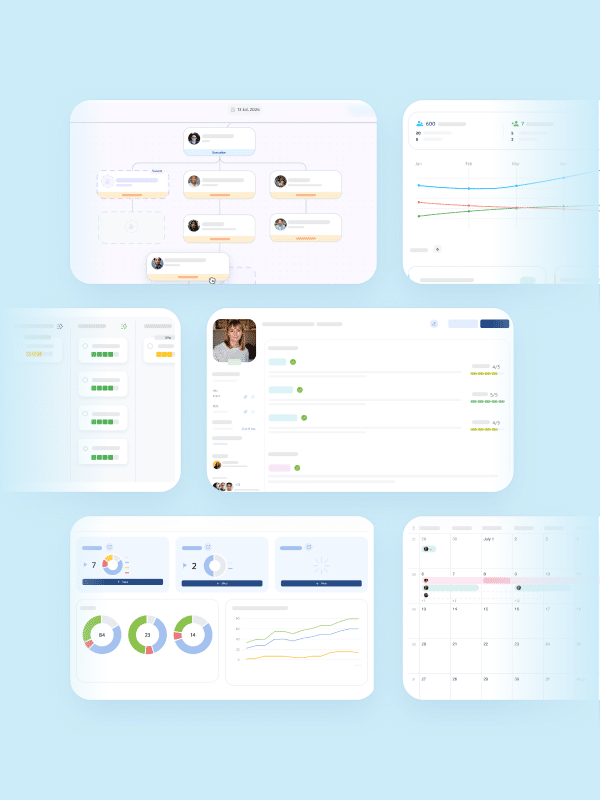A development talk is a talk between an employee and a manager who identifies professional development opportunities.
The development talk investigates whether behaviours could be acting as barriers to an employee’s ability to meet job performance goals and expectations; these talks also help identify performance improvement opportunities.
Why Employee Development Talks Matter
Employee development talks are pivotal in training your employees to become future managers, leaders, or even perform better in their current roles. Development talks are often used to bring more value to an employee’s contribution to their role in the organisation. Employees who are well-trained will represent your company in the best way they can; they will have the ability to contribute to group discussions and speak knowingly about the industry, which reflects well both on them and the business.
Training employees well guarantees that they will reflect the business in a positive light no matter who they come in contact with, whether that is clients, customers, partners or colleagues. A well-trained employee with positive behaviour patterns will give your partners, investors and colleagues a better experience than employees who receive no training.
However, simply letting your employees know that you care about their happiness at work and being fulfilled in their career is just as crucial as offering training, coaching, mentoring, and developing your employees. Showing that you’re invested in your employee’s well-being and career development proves your dedication to teaching your employees how to master their different roles. It shows your desire for them to succeed, which is crucial for employee retention.

Reflections from an HR expert
Development talks, in different forms, are a crucial part of every manager’s toolbox. However, the frequency and the depth of each conversation depend on the situation. In Heartpace, we have free templates for use and adapt to your specific needs.
What Should These Talks Be About?
So now that you know why you need to have development talks, what should they be about?
Development talks are there to let employees know that they are valued, and you are rooting for them to succeed both in their career and within your organisation. These conversations can take place at any time where an employee demonstrates readiness for new challenges, opportunities or responsibilities or when an employee begins to demonstrate difficulties in performing the tasks in their role.
The best practice is to have one of these talks with your employees at least once during the year. Typically, these conversations only take around 15-30 minutes. At Heartpace, we provide the tools and conversation guides to help you quickly prepare for structuring these conversations by offering tips for supervisors, conversation objectives, discussion questions, development activities, and documentation form.
Please, see our performance management module for 1-1 talks here.
5 Tips to Have a Successful 1:1 Development Talk
Here are a few expert tips for conducting effective and productive employee development conversations.
1. Have regular focused conversations with employees
An employee’s personal goals, ambitions, and career trajectory will naturally change over time. As a manager, if you are genuinely invested in developing their career, you need to be having regular development conversations.
It’s key to stay focused on your employee’s development within these conversations and not let other work-related issues take over the meeting. By redirecting the employee’s attention, they will feel valued and like they are a priority in the business.
Having regular, focused employee development conversations will also help you to stay informed about where your employee is and what they’re working toward. They will also provide the employee with the vital support and development they need to progress personally.
2. Know your audience — and adjust accordingly
For your employee development conversations to be effective, you must tailor the conversation to the specific employee you’re speaking with. For example, some employees might respond well to direct, constructive feedback on the areas they need to improve on, while others may take that same feedback as criticism and feel discouraged. You can understand your employees preferred method of communication by listening to the way they speak about themselves and their work. Some employees might know precisely where they want to go with their career and want your support in getting there, while others might feel stuck and need help figuring out their next step.
3. Let your employees take the lead
They may be called 1-1 talks, but development conversations are more about listening than talking. When you see potential in your employee, you might be tempted to use an employee development conversation as an opportunity to share what career path you think they should follow or where you think they would excel. However, this isn’t the most beneficial way to have these conversations as you want your employee to feel comfortable speaking openly about their behaviour and goals in their career.
4. Identify the struggles and address them
Indeed, all your efforts will be for nothing if your development framework does not help solve some issue or problem you have in the organisation. You need to identify the struggles and address them. Is the problem a lack of technical skills in a particular department? Or maybe issues come from improper communication and lack of teamwork? Perhaps the struggle may even be in something more personal like fitness and well-being in the office.
As much as possible, each specific problem or issue needs a particular solution. If you can identify precisely where you need help, you’re already one step in the right direction.
5. Discuss how short-term goals affect employees in the long term
Employees need to know the value of their short-term goals, help your employees see how the goals they set for the next six months will affect their long-term aspirations. A series of short-term goals should work together to support progress toward impactful benchmarks down the road. The better you understand what your employees are aiming for, the more you can help them reach those goals and maximise their potential. Listening to and aiding employees can boost engagement and create a greater level of employee retention.

Browse our webinar library!
We have a number of webinars about different HR related topics available to watch whenever you want.
In conclusion
When you hire a new employee, you’re bringing them on to do a specific job, and as a manager, it’s your responsibility to push them to reach their career potential. Employee development conversations are essential if you want to help your employees identify their goals and grow as professionals.
Now that you know how to have effective and productive employee development conversations, you need to put this into practice. Our Performance Management module at Heartpace can help develop your employee’s careers through one-to-one talks and check-ins, click here for more information.

Do you want to see more?
Book a demo here to see Heartpace HR system
Explore more posts
Want to keep updated?
Subscribe to our blog posts, news and webinars here. We promise that we won’t overwhelm you with emails, nor will we never ever give your email address to anyone else!








